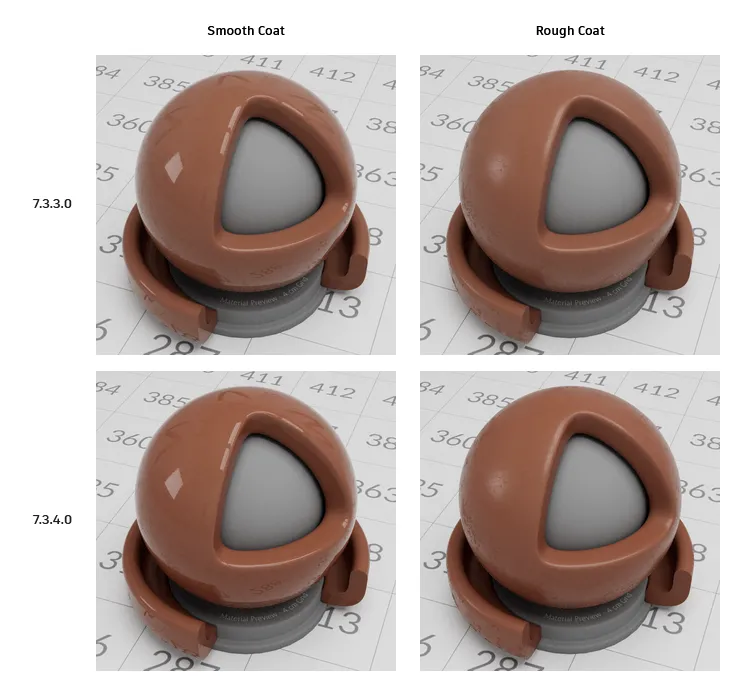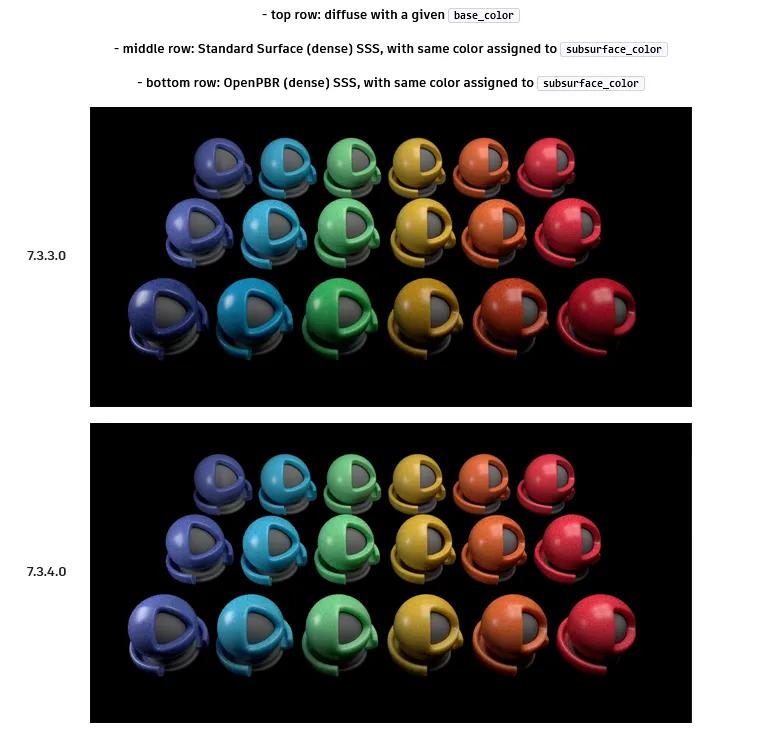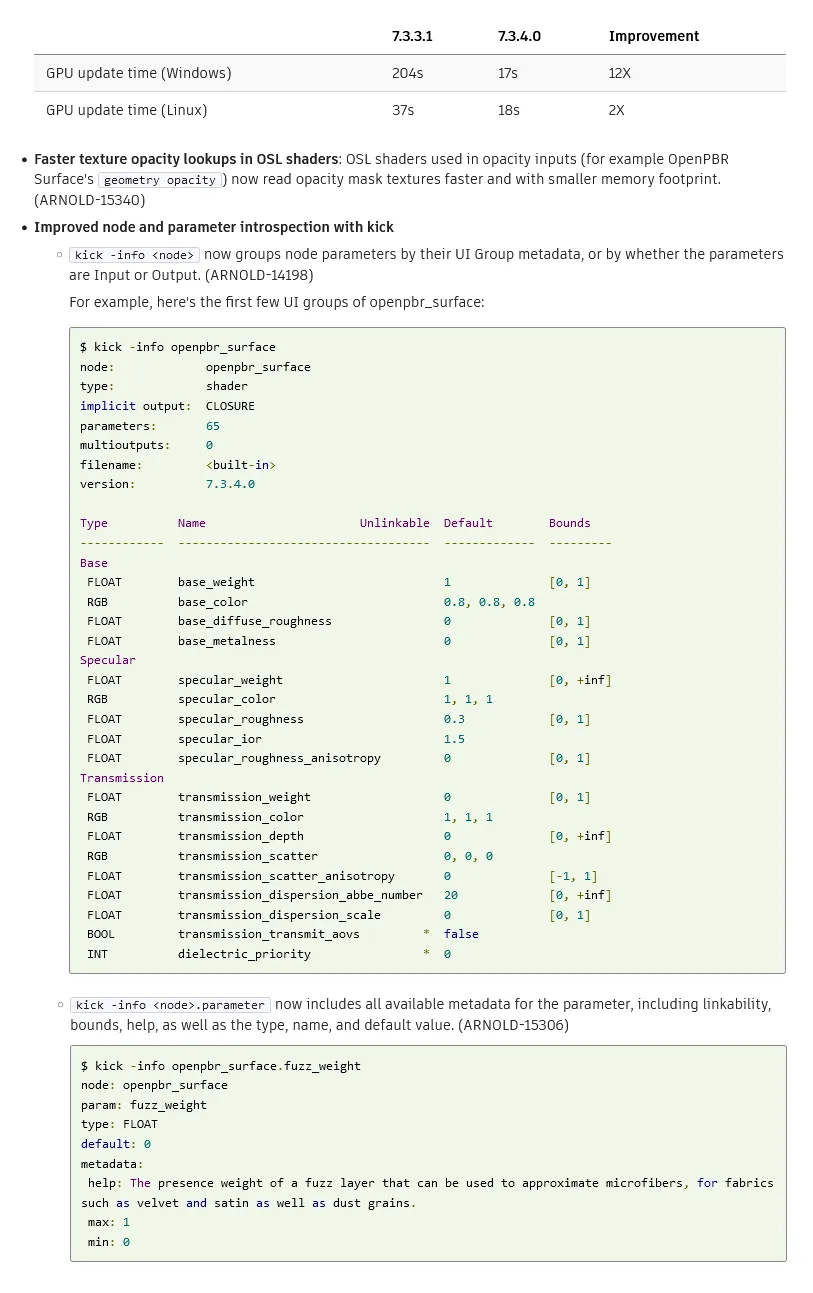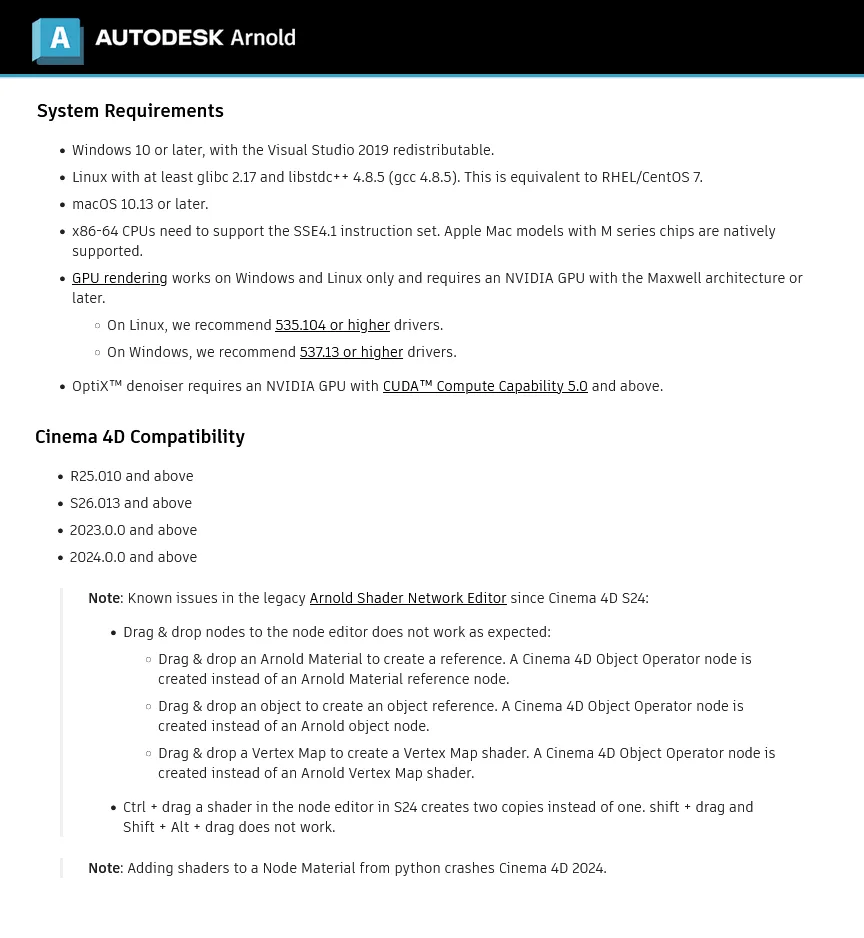
Free Download Solid Angle Cinema 4D to Arnold 4.7.6 | 5.6 Gb
Solid Angle, a bussines Autodesk, is pleased to announce the availability ofArnold 4.7.6 for Cinema 4D. This release uses Arnold 7.3.4.0 and is a minor feature release bringing OpenPBR surface improvements, optimizations, and bug fixes
Owner:Solid Angle
Product Name:Arnold for Cinema 4D
Version:4.7.6
Supported Architectures:x64
Website Home Page :www.arnoldrenderer.com
Languages Supported:english
System Requirements:Windows, macOs & Linux *
Size:5.6 Gb.
Enhancements
-OpenPBR improvements
.View-dependent coat absorption:The coat lobe now more accurately models the absorption tinting at grazing angles, producing a slightly more realistic look. (ARNOLD-15377)

Close
-SSS color matching:The SSS model has been tuned to ensure that the color of dense SSS more closely matches the supplied subsurface_color, as required by the OpenPBR specification. (ARNOLD-15328)

Close
-Scaling of emission luminance from nits to Arnold units:nits_per_unit was added to the options node, and OpenPBR Surface's emission_luminance (in nits) is internally scaled down by this nits_per_unit value (defaulting to 1000) to bring it into Arnold units. This ensures that the default soft-maximum of emission_luminance of 1000 nits corresponds to the former behavior of Standard Surface at emission 1. (ARNOLD-15364)
-Faster startup times on GPU:We have made several optimizations to improve startup and scene update time on GPU. These improvements will be most noticeable on scenes with many objects. Startup times on Windows are also now on par with startup times on Linux. On a scene with 1 million instances, we see the following improvements when compared to the previous release. (ARNOLD-15271, ARNOLD-15279, ARNOLD-15310)

Close
-Handle update for OSL shader changes:Information about shaders linked to an OSL shader is stored when using interactive render mode, so that any change in those shaders will cause the OSL shader to be automatically updated. (ARNOLD-14983)
-Duplicate node name warnings:Warnings are emitted when adding a node with a name that already exists or renaming an existing node to an empty string. (ARNOLD-12596)
Bug Fixes
- ARNOLD-14735 - OIDN denoiser bucket artifacts during negative-AA progressive passes
- ARNOLD-15380 - [GPU] small memory leak when using AOV shaders
- ARNOLD-15384 - [GPU] memory leak each time an OSL shader is modified
- ARNOLD-15385 - Crash on standard_volume when modifying material interactively
- ARNOLD-15392 - [GPU] small memory leak when using OSL shaders
Arnoldis a physically-based, photo-realistic rendering tool that utilizes ray tracing techniques to produce high-quality renders for CG and VFX animation.Ray tracing is a mathematical algorithm (based on the Monte Carlo Path Tracing equation) that creates an image by projecting rays into a scene, reflecting them off surfaces and toward light sources to approximate the color value of pixels. Arnold utilizes computer hardware resources such as memory, multiple processor cores, and disk space to accomplish these tasks.
Arnold Cinema 4Dsupports most Cinema 4D features such as instances, cloners, deformers, generators, MoGraph geometry, hair, and ThinkingParticles. It also supports both animation and single frame distributed rendering in Team Render, allowing the use of all computers in a local network to speed-up Arnold rendering. Third-party plugins TurbulenceFD and X-Particles are natively supported, allowing artists to render high quality smoke, fire, and particle effects with fully interactive feedback. Other features include volume rendering with OpenVDB, a node-based material editor and a comprehensive list of shaders and utilities, including vertex maps and per-face materials.
Arnold Render в Cinema 4D | Стрим#71
Solid Angle SLis the technology company behind the Arnold rendering software, with offices in Madrid and London and customers throughout the world including Framestore, DreamWorks, ILM, Sony Pictures Imageworks, MPC, The Mill, Mikros Image and Rising Sun Pictures. Arnold was designed from the ground up to efficiently raytrace the complex geometric datasets required for feature-length CGI animation and big budget visual effects, while at the same time simplifying the pipeline, reducing the number of passes, minimizing storage requirements and greatly enhancing interactivity for lighting artists.

